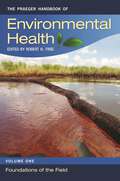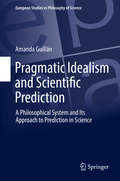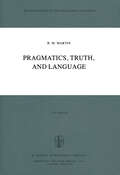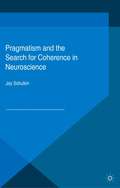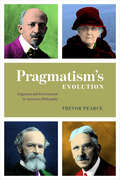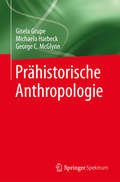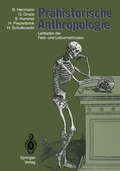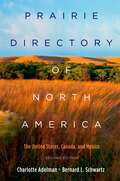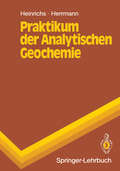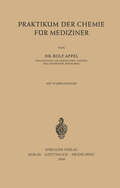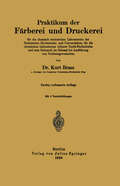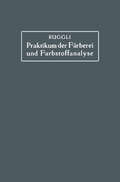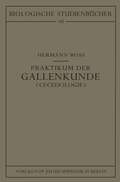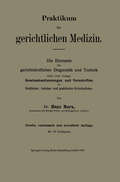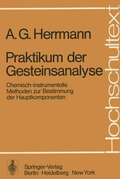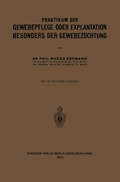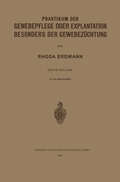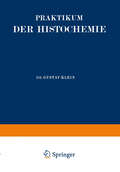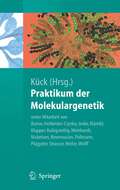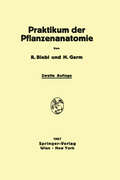- Table View
- List View
The Praeger Handbook of Environmental Health [4 volumes]: [4 volumes]
Written by internationally acclaimed experts in the United States and abroad, this comprehensive set of environmental health articles serves to clarify our impending challenges as well as opportunities for health and wellness.Written in an accessible style that is appropriate for general readers as well as professionals in the environmental health field, this work provides a comprehensive yet coherent review of the principal environmental challenges that confront our society. This four-volume work taps a multidisciplinary team of experts from across the nation to present emerging information about how our world is being impacted, the effects on health and life, and the steps we are taking—and should take—to correct or avoid the problems. The Praeger Handbook of Environmental Health comprises four volumes: Foundations of the Field; Agents of Disease; Water, Air, and Solid Waste; and Current Issues and Emerging Debates. Within each volume, chapters cover the latest scientific research findings in an objective manner and present practical applications of the information. Topics addressed include air and water contaminants, PCBs, hazardous waste, household cleaning products, dioxin, plastics, radiation, radon, electromagnetic fields, and noise and light pollution, just to name a few. This title stands alone in its comprehensive coverage of environmental health topics.
Pragmatic Idealism and Scientific Prediction: A Philosophical System and Its Approach to Prediction in Science (European Studies in Philosophy of Science)
by Amanda GuillánThis monograph analyzes Nicholas Rescher’s system of pragmatic idealism. It also looks at his approach to prediction in science. Coverage highlights a prominent contribution to a central topic in the philosophy and methodology of science. The author offers a full characterization of Rescher’s system of philosophy. She presents readers with a comprehensive philosophico-methodological analysis of this important work. Her research takes into account different thematic realms: semantic, logical, epistemological, methodological, ontological, axiological, and ethical. The book features three, thematic-parts: I) General Coordinates, Semantic Features and Logical Components of Scientific Prediction; II) Predictive Knowledge and Predictive Processes in Rescher’s Methodological Pragmatism; and III) From Reality to Values: Ontological Features, Axiological Elements, and Ethical Aspects of Scientific Prediction. This insightful analysis offers a critical reconstruction of Rescher’s philosophy. The system he created is often characterized as pragmatic idealism that is open to some realist elements. He is a prominent representative of contemporary pragmatism who has made a great deal of contributions to the study of this topic. This area is crucial for science and it has been little considered in the philosophy of science.
Pragmatics, Truth, and Language (Boston Studies in the Philosophy and History of Science #38)
by R.M. MartinRichard Martin's thoroughly philosophical as well as thoroughly tech nical investigations deserve continued and appreciative study. His sympathy and good cheer do not obscure his rigorous standard, nor do his contemporary sophistication and intellectual independence obscure his critical congeniality toward classical and medieval philosophers. So he deals with old and new; his papers, in his neat self-descriptions, consist of reminders, criticisms, and constructions. They might also be seen as studies in the understanding of truth, ramifying as widely in mathematics, logic, and epistemology as well as metaphysics, as such understanding has required. For us it is a pleasant occasion to welcome Richard Martin's new Boston Studies, and to note his continuously con collection to the structive and critical interventions at the Boston Colloquium for the of Science. Philosophy Boston University Center for the R. S. COHEN Philosophy and History of Science M. W. WARTOFSKY July 1979 vii TABLE OF CONTENTS EDITORIAL PREFACE vii PREFACE xi ACKNOWLEDGEMENTS xv I. Truth and Its Illicit Surrogates II. Some Reminders concerning Truth, Satisfaction, and Reference 17 III. On Disquotation and Intensionality 30 IV. On Truth, Belief, and Modes of Description 42 V. The Pragmatics of Self-Reference 55 VI. On Suppositio and Denotation 72 VII. Of Time and the Null Individual 82 VIII. Existence and Logical Form 95 IX. Tense, Aspect, and Modality 110 X. Of 'Of' 130 XI. Events and Actions: Brand and Kim 144 XII. Why I Am Not a Montague Grammarian 160 XIII.
Pragmatism and the Search for Coherence in Neuroscience
by Jay SchulkinWe have known for over a thousand years that the brain underlies behavioral expression, but effective scientific study of the brain is only very recent. Two things converge in this book: a great respect for neuroscience and its many variations, and a sense of investigation and inquiry demythologized. Think of it as foraging for coherence.
Pragmatism's Evolution: Organism and Environment in American Philosophy
by Trevor PearceIn Pragmatism’s Evolution, Trevor Pearce demonstrates that the philosophical tradition of pragmatism owes an enormous debt to specific biological debates in the late 1800s, especially those concerning the role of the environment in development and evolution. Many are familiar with John Dewey’s 1909 assertion that evolutionary ideas overturned two thousand years of philosophy—but what exactly happened in the fifty years prior to Dewey’s claim? What form did evolutionary ideas take? When and how were they received by American philosophers? Although the various thinkers associated with pragmatism—from Charles Sanders Peirce to Jane Addams and beyond—were towering figures in American intellectual life, few realize the full extent of their engagement with the life sciences. In his analysis, Pearce focuses on a series of debates in biology from 1860 to 1910—from the instincts of honeybees to the inheritance of acquired characteristics—in which the pragmatists were active participants. If we want to understand the pragmatists and their influence, Pearce argues, we need to understand the relationship between pragmatism and biology.
Pragmatism's Evolution: Organism and Environment in American Philosophy
by Trevor PearceIn Pragmatism’s Evolution, Trevor Pearce demonstrates that the philosophical tradition of pragmatism owes an enormous debt to specific biological debates in the late 1800s, especially those concerning the role of the environment in development and evolution. Many are familiar with John Dewey’s 1909 assertion that evolutionary ideas overturned two thousand years of philosophy—but what exactly happened in the fifty years prior to Dewey’s claim? What form did evolutionary ideas take? When and how were they received by American philosophers? Although the various thinkers associated with pragmatism—from Charles Sanders Peirce to Jane Addams and beyond—were towering figures in American intellectual life, few realize the full extent of their engagement with the life sciences. In his analysis, Pearce focuses on a series of debates in biology from 1860 to 1910—from the instincts of honeybees to the inheritance of acquired characteristics—in which the pragmatists were active participants. If we want to understand the pragmatists and their influence, Pearce argues, we need to understand the relationship between pragmatism and biology.
Pragmatism's Evolution: Organism and Environment in American Philosophy
by Trevor PearceIn Pragmatism’s Evolution, Trevor Pearce demonstrates that the philosophical tradition of pragmatism owes an enormous debt to specific biological debates in the late 1800s, especially those concerning the role of the environment in development and evolution. Many are familiar with John Dewey’s 1909 assertion that evolutionary ideas overturned two thousand years of philosophy—but what exactly happened in the fifty years prior to Dewey’s claim? What form did evolutionary ideas take? When and how were they received by American philosophers? Although the various thinkers associated with pragmatism—from Charles Sanders Peirce to Jane Addams and beyond—were towering figures in American intellectual life, few realize the full extent of their engagement with the life sciences. In his analysis, Pearce focuses on a series of debates in biology from 1860 to 1910—from the instincts of honeybees to the inheritance of acquired characteristics—in which the pragmatists were active participants. If we want to understand the pragmatists and their influence, Pearce argues, we need to understand the relationship between pragmatism and biology.
Pragmatism's Evolution: Organism and Environment in American Philosophy
by Trevor PearceIn Pragmatism’s Evolution, Trevor Pearce demonstrates that the philosophical tradition of pragmatism owes an enormous debt to specific biological debates in the late 1800s, especially those concerning the role of the environment in development and evolution. Many are familiar with John Dewey’s 1909 assertion that evolutionary ideas overturned two thousand years of philosophy—but what exactly happened in the fifty years prior to Dewey’s claim? What form did evolutionary ideas take? When and how were they received by American philosophers? Although the various thinkers associated with pragmatism—from Charles Sanders Peirce to Jane Addams and beyond—were towering figures in American intellectual life, few realize the full extent of their engagement with the life sciences. In his analysis, Pearce focuses on a series of debates in biology from 1860 to 1910—from the instincts of honeybees to the inheritance of acquired characteristics—in which the pragmatists were active participants. If we want to understand the pragmatists and their influence, Pearce argues, we need to understand the relationship between pragmatism and biology.
Prähistorische Anthropologie
by Gisela Grupe Michaela Harbeck George C. McGlynnDieses Buch bietet ein modernes methodisches Kompendium, mit dessen Hilfe eine umfassende Bearbeitung von historischen menschlichen Skelettresten möglich ist. Dargestellt ist das gesamte gängige methodische Repertoire von der Ausgrabung bis zur vergleichenden Auswertung der Daten. Ein Schwergewicht liegt auf moderner Laboranalytik (u.a. Isotopen- und DNA-Analyse). Auf ungewöhnliche Überlieferungsformen menschlicher Überreste (Leichenbrände, Mumien, Moorleichen) wird ebenfalls ausführlich eingegangen. Berücksichtigt werden die Entwicklungen der letzen Jahre, v.a. auch auf dem juristischem und dem ethischem Sektor.
Prähistorische Anthropologie: Leitfaden der Feld- und Labormethoden
by Bernd Herrmann Gisela Grupe Susanne Hummel Hermann Piepenbrink Holger SchutkowskiErstmalig für den deutschen Sprachraum wird ein methodisches Kompendium vorgelegt, mit dessen Hilfe eine umfassende Bearbeitung von historischen menschlichen Skelettresten ohne weiterführende Literatur möglich ist. Dargestellt ist das gesamte gängige methodische Repertoir von der Ausgrabung bis zur vergleichenden Auswertung der Daten. Ein Schwergewicht liegt auf moderner Laboranalytik (u.a. Spurenelement- und DNA-Analyse). Ziel und Nutzen des Buchs sind, daß ein Bearbeiter/Ratsuchender/Studierender allein mit dem vorliegenden Werk seine Arbeit planen und durchführen kann. Hierzu dienen besonders ausführliche Rezepturen und Fallbeispiele, Illustrationen und anatomische Abbildungen. Auf ungewöhnliche Überlieferungsformen menschlicher Überreste (Leichenbrände, Mumien, Moorleichen) wird ebenfalls und ausführlich eingegangen.
Prairie Directory of North America: The United States, Canada, and Mexico
by Charlotte Adelman Bernard SchwartzThe first single, comprehensive source for locating North American public prairies, grasslands, and savannas, Prairie Directory of North America is a guide unlike any other. First published in 2001, the book uniquely catalogs the continent's most well-known prairie sites by country and state for easy reference. With the addition of over three hundred newly located, preserved, or restored sites, the second edition is the prairie enthusiast's ideal guide to locating countless North American sites-from the well-documented to the remote. Readers can use the guide to plan both convenient visits to close-to-home prairies and journeys to sites well across the continent. Also included is an expanded state-by-state index, ideal for locating specific prairies in any given state. The victim of destructive plowing and construction at the hands of European settlers, North American grassland ecosystems that once spanned the entire continent have suffered degradation and fragmentation. With the Prairie Directory as a guide, however, ecologists, environmental scientists, and tourists can experience the essence of this ancient ecosystem and, in some locations, even its vastness. The book lists tiny, hidden half-acre prairies spared by the plow as well as popular sites covering millions of acres. It documents prairies hidden deep in forests or in plain sight in American Indian reservations. The only one of its kind, this book will allow readers to experience the prairie as a colorful, fragrant, wildlife-rich North American landscape.
Prairie Directory of North America: The United States, Canada, and Mexico
by Bernard Schwartz Charlotte AdelmanThe first single, comprehensive source for locating North American public prairies, grasslands, and savannas, Prairie Directory of North America is a guide unlike any other. First published in 2001, the book uniquely catalogs the continent's most well-known prairie sites by country and state for easy reference. With the addition of over three hundred newly located, preserved, or restored sites, the second edition is the prairie enthusiast's ideal guide to locating countless North American sites-from the well-documented to the remote. Readers can use the guide to plan both convenient visits to close-to-home prairies and journeys to sites well across the continent. Also included is an expanded state-by-state index, ideal for locating specific prairies in any given state. The victim of destructive plowing and construction at the hands of European settlers, North American grassland ecosystems that once spanned the entire continent have suffered degradation and fragmentation. With the Prairie Directory as a guide, however, ecologists, environmental scientists, and tourists can experience the essence of this ancient ecosystem and, in some locations, even its vastness. The book lists tiny, hidden half-acre prairies spared by the plow as well as popular sites covering millions of acres. It documents prairies hidden deep in forests or in plain sight in American Indian reservations. The only one of its kind, this book will allow readers to experience the prairie as a colorful, fragrant, wildlife-rich North American landscape.
Praktikum der Analytischen Geochemie (Springer-Lehrbuch)
by Hartmut Heinrichs Albert G. HerrmannDas Praktikum der Analytischen Geochemie behandelt die quantitative Analyse von natürlichen und anthropogenen Substanzen mittels chemisch-instrumenteller Verfahren. Das Buch enthält viele bisher unveröffentlichte Daten und ist das Ergebnis jahrzehntelanger Erfahrungen der Autoren in Forschung und Lehre. Der Teil I Grundlagen informiert über die Entnahme und Vorbehandlung von Proben, die Beurteilung von Analysedaten, über Referenzproben, Anforderungen an analytische Einrichtungen sowie über die Grundlagen der Gravimetrie, Titrimetrie, Spektralphotometrie, AAS, AES, ICP-AES, ICP-MS und Verdampfungsanalyse. Im Teil II Analysemethoden werden Aufschlußverfahren sowie detaillierte Arbeitsanleitungen zur quantitativen Bestimmung von 52 Elementen beschrieben. Abschnitte über Kontaminationen bei der Probevorbereitung und Analyse sowie über die Beseitigung von Laborabfällen ergänzen die Ausführungen. Angesprochen werden mit dieser aktuellen Publikation Studierende, Forscher und Praktiker, vor allem in den Geowissenschaften, der Umweltforschung, der Analytischen Chemie und in den verwandten Fachgebieten. In den letzten 15 Jahren hat die Bedeutung der analytischen Geochemie in Lehre, Forschung und Praxis wesentlich zugenommen. So sind neben die bisherigen geowissenschaftlichen Arbeitsrichtungen die Umweltgeochemie und die Oberflächen- sowie die Untergrund-Deponien als neue Fachgebiete getreten. Das Praktikum der Analytischen Geochemie trägt dieser Entwicklung Rechnung. Es behandelt die quantitative Analyse von natürlichen und anthropogenen Substanzen mittels chemisch-instrumenteller Verfahren. Ferner wird ausführlich auf die Bedeutung der Entnahme und Vorbehandlung von natürlichen Proben eingegangen. Das Buch enthält zahlreiche bisher unveröffentlichte Daten und beruht auf jahrzentelanger Erfahrung der Autoren in Forschung und Lehre. Es ist deshalb im Lehrbetrieb und zum Gebrauch in Laboratorien gleichermaßen geeignet. Studierenden, Forschern und Praktikern, vor allem in den Geowissenschaften, der Umweltforschung, der Analytischen Chemie und in den verwandten Fachdisziplinen ist es ein unentbehrliches Lehrbuch und Nachschlagewerk. Das vorliegende Lehrbuch bildet die Basis für das Studium der natürlichen und im Verlauf geologischer Zeiten stabilisierten Stoffkreisläufe in der Lithosphäre, Hydrosphäre sowie Atmosphäre, deren Beeinflussung durch anthropogene Stoffe sowie deren Bedeutung für die Langzeitsicherheit unterirdischer Deponielokalitäten. Es richtet sich vor allem an Geowissenschaftler, Chemiker, Chemotechniker und Laboranten.
Praktikum der Elektrochemie
by Franz FischerDieser Buchtitel ist Teil des Digitalisierungsprojekts Springer Book Archives mit Publikationen, die seit den Anfängen des Verlags von 1842 erschienen sind. Der Verlag stellt mit diesem Archiv Quellen für die historische wie auch die disziplingeschichtliche Forschung zur Verfügung, die jeweils im historischen Kontext betrachtet werden müssen. Dieser Titel erschien in der Zeit vor 1945 und wird daher in seiner zeittypischen politisch-ideologischen Ausrichtung vom Verlag nicht beworben.
Praktikum der Färberei und Druckerei: für die chemisch - technischen Laboratorien der Technischen Hochschulen und Universitäten, für die chemischen Laboratorien höherer Textil-Fachschulen und zum Gebrauch im Hörsaal bei Ausführung von Vorlesungsversuchen
by Kurt BrassDieser Buchtitel ist Teil des Digitalisierungsprojekts Springer Book Archives mit Publikationen, die seit den Anfängen des Verlags von 1842 erschienen sind. Der Verlag stellt mit diesem Archiv Quellen für die historische wie auch die disziplingeschichtliche Forschung zur Verfügung, die jeweils im historischen Kontext betrachtet werden müssen. Dieser Titel erschien in der Zeit vor 1945 und wird daher in seiner zeittypischen politisch-ideologischen Ausrichtung vom Verlag nicht beworben.
Praktikum der Färberei und Farbstoffanalyse für Studierende
by Paul RuggliDieser Buchtitel ist Teil des Digitalisierungsprojekts Springer Book Archives mit Publikationen, die seit den Anfängen des Verlags von 1842 erschienen sind. Der Verlag stellt mit diesem Archiv Quellen für die historische wie auch die disziplingeschichtliche Forschung zur Verfügung, die jeweils im historischen Kontext betrachtet werden müssen. Dieser Titel erschien in der Zeit vor 1945 und wird daher in seiner zeittypischen politisch-ideologischen Ausrichtung vom Verlag nicht beworben.
Praktikum der Gallenkunde "Cecidologie": Entstehung - Entwicklung - Bau der durch Tiere und Pflanzen hervorgerufenen Gallbildungen sowie Ökologie der Gallenerreger (Biologische Studienbücher (geschlossen) #12)
by Hermann RoßDieser Buchtitel ist Teil des Digitalisierungsprojekts Springer Book Archives mit Publikationen, die seit den Anfängen des Verlags von 1842 erschienen sind. Der Verlag stellt mit diesem Archiv Quellen für die historische wie auch die disziplingeschichtliche Forschung zur Verfügung, die jeweils im historischen Kontext betrachtet werden müssen. Dieser Titel erschien in der Zeit vor 1945 und wird daher in seiner zeittypischen politisch-ideologischen Ausrichtung vom Verlag nicht beworben.
Praktikum der gerichtlichen Medizin: Die Elemente der gerichtsärztlichen Diagnostik und Technik nebst einer Anlage: Gesetzesbestimmungen und Vorschriften für Mediziner, Juristen und praktische Kriminalisten
by Hugo MarxDieser Buchtitel ist Teil des Digitalisierungsprojekts Springer Book Archives mit Publikationen, die seit den Anfängen des Verlags von 1842 erschienen sind. Der Verlag stellt mit diesem Archiv Quellen für die historische wie auch die disziplingeschichtliche Forschung zur Verfügung, die jeweils im historischen Kontext betrachtet werden müssen. Dieser Titel erschien in der Zeit vor 1945 und wird daher in seiner zeittypischen politisch-ideologischen Ausrichtung vom Verlag nicht beworben.
Praktikum der Gesteinsanalyse: Chemisch-instrumentelle Methoden zur Bestimmung der Hauptkomponenten (Hochschultext)
by A.G. HerrmannPraktikum der Gewebepflege oder Explantation Besonders der Gewebezüchtung
by Rhoda ErdmannDieser Buchtitel ist Teil des Digitalisierungsprojekts Springer Book Archives mit Publikationen, die seit den Anfängen des Verlags von 1842 erschienen sind. Der Verlag stellt mit diesem Archiv Quellen für die historische wie auch die disziplingeschichtliche Forschung zur Verfügung, die jeweils im historischen Kontext betrachtet werden müssen. Dieser Titel erschien in der Zeit vor 1945 und wird daher in seiner zeittypischen politisch-ideologischen Ausrichtung vom Verlag nicht beworben.
Praktikum der Gewebepflege oder Explantation Besonders der Gewebezüchtung
by Rhoda ErdmannDieser Buchtitel ist Teil des Digitalisierungsprojekts Springer Book Archives mit Publikationen, die seit den Anfängen des Verlags von 1842 erschienen sind. Der Verlag stellt mit diesem Archiv Quellen für die historische wie auch die disziplingeschichtliche Forschung zur Verfügung, die jeweils im historischen Kontext betrachtet werden müssen. Dieser Titel erschien in der Zeit vor 1945 und wird daher in seiner zeittypischen politisch-ideologischen Ausrichtung vom Verlag nicht beworben.
Praktikum der Histochemie
by Gustav KleinDieser Buchtitel ist Teil des Digitalisierungsprojekts Springer Book Archives mit Publikationen, die seit den Anfängen des Verlags von 1842 erschienen sind. Der Verlag stellt mit diesem Archiv Quellen für die historische wie auch die disziplingeschichtliche Forschung zur Verfügung, die jeweils im historischen Kontext betrachtet werden müssen. Dieser Titel erschien in der Zeit vor 1945 und wird daher in seiner zeittypischen politisch-ideologischen Ausrichtung vom Verlag nicht beworben.
Praktikum der Molekulargenetik (Springer-Lehrbuch)
by Astrid Bunse Heike Holländer-Czytko Stefanie Jeske Christian Klämbt Robert Klapper K. Wolff Ines I. Kubigsteltig Friedhelm Meinhardt Jörg Nickelsen Minou Nowrousian Stephan Pollmann Stefanie Pöggeler Thomas Strasser Elmar W. Weiler Gabriele WolffDer Band bietet eine gelungene Mischung aus Lehrbuchtext und Anleitung zum Experiment. Er versammelt alle Modellorganismen (Bakterien, Pilze, Algen, Pflanzen, Tiere) und behandelt die zentralen biologischen Fragen zur Molekulargenetik in folgenden Kapiteln: Einführung in die Biologie der Experimentalorganismen; Kreuzungsexperimente; DNA-Transformationsexperimente; Versuche zur RNA-Analytik, zur Analyse von Nukleinsäure-Protein-Interaktionen, zur PCR-Analytik, zur heterologen Genexpression und zum Einsatz von Reportergenen; Bioinformatik.
